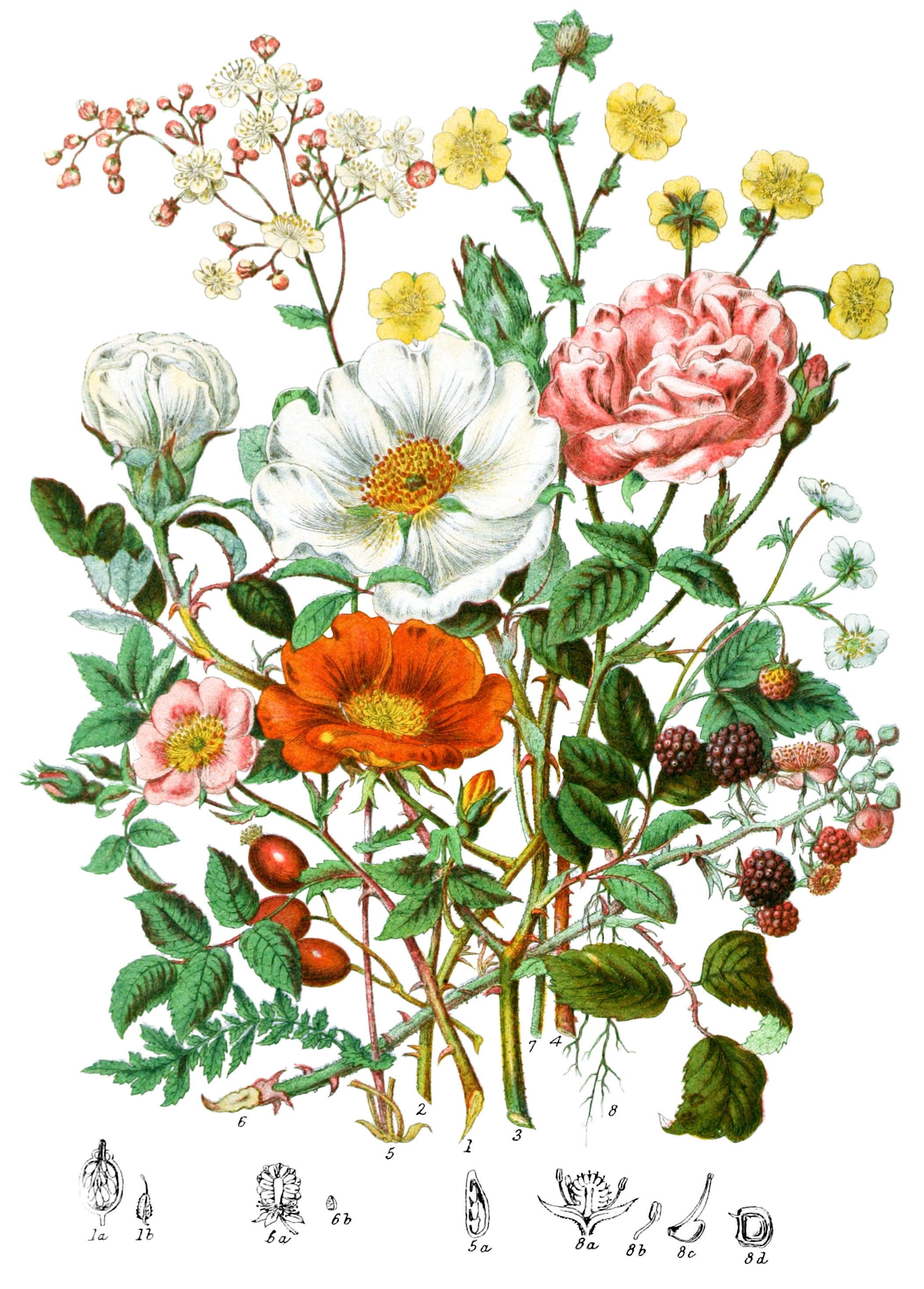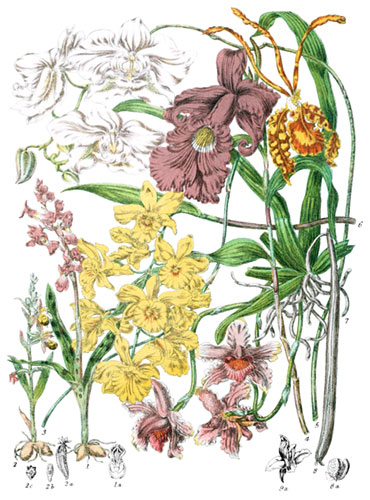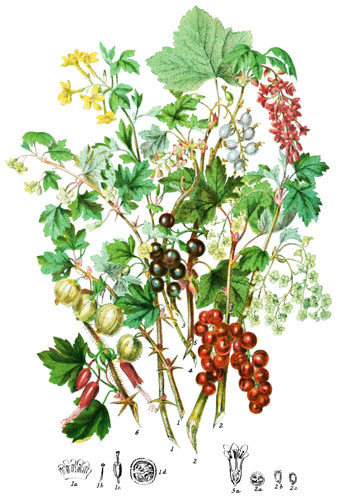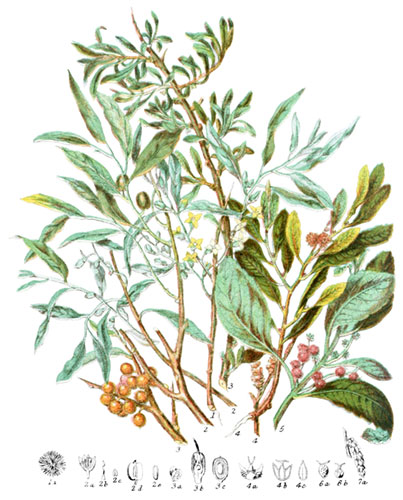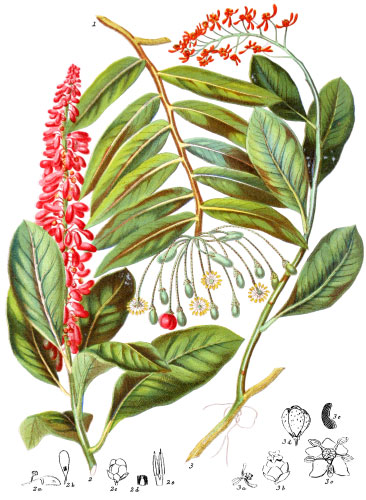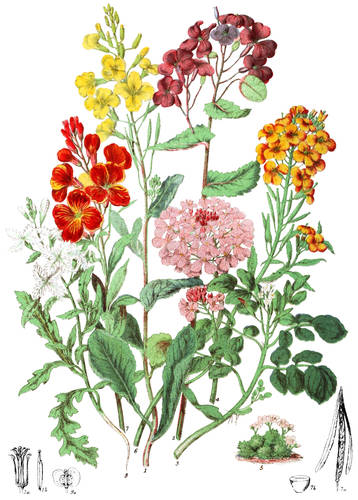Key characteristics
Shrubs and herbaceous plants. The leaves ar esimple or compound, alternate, often having a pair of stipules at their base, occasionally dotted. The flowers vary in form and size, and are variously arranged, occasionally imperfect. The calyx is three, four, or five-lobed, with a disk either lining the tube or surrounding the orifice; the fifth lobe placed next to the stem. In the true Roses the calyx tube becomes fleshy and covers the fruit; in Potentilla and others it remains herbaceous, and the fruit is a mass of Achenia. The stamens are of definite number, or many, arising from the calyx, curved inwards in the bud; the anthers are two-celled, bursing lengthwise; occasionally one-celled, bursting transversely. The ovaries are above the calyx, solitary or several, one-celled, sometimes cohering. The styles are many or single, stigmas compound or simple. The fruit is various, containing a one-seeded nut, or seeds; the seeds have no albume.
This tribe has close affinity with the Apple and Almond tribes; but the fruit clearly distinguishes each.
Astringent tonic juices and wholesome fruits are the characteristics of these plants.
Select plants in this order
Not all plants listed are illustrated and not all plants illustrated are listed.
- Rosa, the Rose, has the same name in all languages,a nd from time immemorial has been considered pre-eminent for beauty of form and colour, and fragrant scent. Various species abound in Europe and Asia, and countless varieties have ben produced by cultivation: in a wild state the flower has only five petals, but they are readily multiplied. Those which adorn our hedges are either pink or white; in Austria and the north of Italy, as well as near Cortona and elsewhere, a yellow Rose is abundant. Rose-bushes are liable to the attacks of an insect, which punctures the bark and causes the growth of rose-galls and mossy tufts on the stalks.
- R. canina (1) is a beatiful ornamentof hedgerows in June; the astringent fruit is used medicinally; in Germany it is made into a conserve, and eaten with roast meat.
- R. rubiginosa, Sweet-briar or Eglantine, grows on gravel or chalk soil here and on the Continent, and for its delightful fragrance is admitted into every garen.
- R. bracteata (3) is the finest of white Roses, with glossy foliage, and simple flower of extremely delicate perfume; it was brought from China by Lord Macartney, and is become acclimatized in this country.
- The petals of R. gallica (4) are not so highly scented as those of some other species, but they have astringent tonic properties, and are employed as medicine.
- The celebrated Attar of Roses of the East is extracted from the petals of R. moschata and R. damascena.
- No native Rose exists on the plains of India, but on the Himalayas several species are found; one of the most beautiful is R. Lyelli, with double white flowers; some climb to the tops of lofty trees, adorning them with their elegant branches.
- Rubus futicosus (6) is the well-known Bramble, common in many countries in rough places and hedges; the Blackberry is the most abundant at least of our native fruits, although not much esteemed; it is a native also of Cashmere.
- R. idæus, the Raspberry, grows in woods and hedges in the north of England; the fruit is of good flavour, but it has been much improved by cultivation, particularly in Holland.
- The leaves of R. arcticus are used in the most northern countries as tea.
- The fruit of R. chamæmorus and others, is thought to possess medicinal properties; the root of R. villosa is used in North America.
- Fragaria affords one of the most wholesome and agreeable fruits.
- F. vesca (8) and F. elatior are the two British species; from these many varieties have been raised, as well as from F. Virginiana, the Scarlet Strawberry, imported from North America more than two centuries ago.
- F. rubicola affords a grateful fruit to the natives of the Himalayas.
- The dried roots of Spirea filipendula (5) afford a mealy substitute for bread to the poor Laplanders.
- S. Ulmaria is one of the most graceful of British plants, very plentiful in moist meadows, by the side of ditches and streams in Kent and in the Midland counties, or wherever the damp valleys afford a suitable locality, as in Westmoreland. The flowers have an aromatic scent, and it wll deserves the title of “Queen of the Meadow.”
- Dryas is one of this tribe which advances farthest to the north, being found within the Arctic regions; it grows on hills in the Craven district of Yorkshire, and in the Scotch Highlands; the seeds being tipped with the long feathery styles, have a signular appearance in autumn.
- Agrimonia yields a yellow dye, once used for nankeen; A. Nepalensis represents the genus on the Himalayas.
- Poterium and Sanguisorba have heads of small flowers without petals; both are occasionally cultivated for fodder, and known as Burnet.
- The roots of Gillenia trifoliata are employed as Ipecacuanha in the United States.
- Brayera anthelmintica possesses extremely powerful properties.
- In the Feroe Isles, Tormentilla root is used for tanning.
- Sieversia is dispersed on the Swiss Alps, in Kamtschatka and Melville Isle.
- S. elata (7) belongs to the mountains of Asia.
- Quillaia saponaria contains a saponaceous secretion in the bark, which makes it useful as soap in South America.
Locations
This Tribe inhavits chiefly the Temperate or cold climates of the northern hemisphere; a few species are natives of high land within the Tropics; several belong to the Himalayas; a few only to South America. Rubus Jamaicensis is the only example in the West Indies. The apetalous plants represent the Tribe at the Cape of Good Hope.
Legend
- Rosa canina, Dog or Hep Rose. Britain.
- Section of Fruit.
- Seed.
- Rosa punicea, Scarlet Briar Rose. Austria.
- Rosa bracteata, the Macartney Rose. China.
- Rosa gallica, Officinal Rose. S. Europe.
- Spirea filipendula, Drop-wort. Chalk Downs, England.
- Rubus fruticosus, Bramble or Blackberry. Britain.
- Section of Fruit.
- Seed.
- Sieversia elata, Tall Sieversia. Himalayas.
- Fragaria vesca, Wood Strawberry. Britain.
- Section of Fruit.
- Stamen.
- Carpel.
- Achenia, with its Seed.
*5a was not named in the original description.
Explore more
Posters
Decorate your walls with colorful detailed posters based on Elizabeth Twining’s beautiful two-volume set from 1868.
Puzzles
Challenge yourself or someone else to assemble a puzzle of all 160 botanical illustrations.
